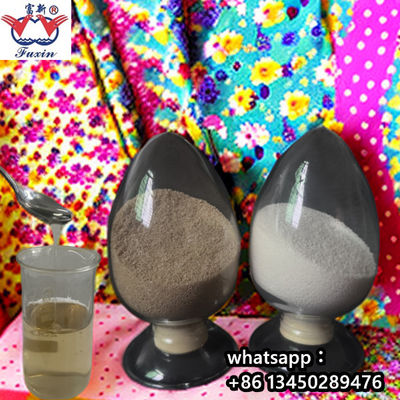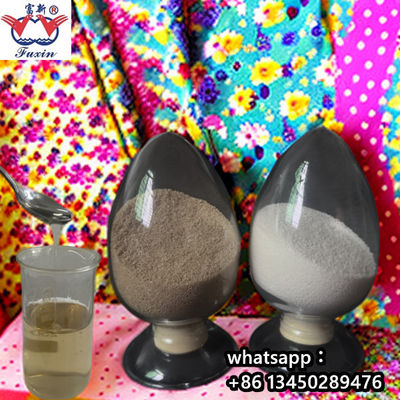High-performance Reactive Printing Thickener CAS No. 9004-32-4
Product Description:
Textile Printing Paste is a specially formulated mixture used in the textile industry to create printed designs on fabric. It consists of pigments, dyes, thickeners, binders, and other additives that work together to achieve desired color, texture, and durability.
The primary purpose of Textile Printing Paste is to transfer colors onto fabric surfaces accurately and evenly. It provides the necessary viscoelastic properties to ensure that the paste adheres to the fabric during printing and maintains its shape and definition.
Thickeners, such as pigment printing thickeners or reactive printing thickeners, are added to the paste to control its viscosity and enhance its printing properties. Thickeners help to prevent color bleeding and ensure sharp and well-defined patterns and designs. Additionally, binders, such as salt, urea, and polymeric resins, are used to improve the adhesive properties of the paste and prevent premature wash-off and fading.
Features:
Sodium carboxymethyl cellulose aqueous solution is clear, transparent, homogeneous and has favorable stability. Furthermore, its viscosity won't be affected by mechanical force, so it has no change with pump cycle or stirring. It is stored in the size tank and not affected by the temperature or bacteria so can be taken at any time according to production needs.
This cellulose gum is full of viscidity and film-forming property. It can form smooth, wear-resistant, and flexible film on the surface of warp, bear the absolute strength, relative activity and friction of weaving machine, so it helps to provide favorable conditions for weaving more exquisite high grade fabric and high-speed production.
The yarn processed with sodium carboxymethyl cellulose aqueous solution is easily dry and glossy, with a soft hand feel. Furthermore, desizing is very convenient without chemical treatment or the consumption of desizing agents.
The yarn count and fabric processed with sodium carboxymethylcellulose aqueous solution won't get yellowing or mildewed, so it can dramatically reduce substandard goods with defective spots or greasy dirt, and avoid damages by worms or rats.
When starch is used as the size, it needs to have a full set of precise machinery and control instrument with complicated operations. However, using cellulose gum can greatly simplify the requirements, improve the sanitary condition of workshop, making the maintenance of mechanical equipment more convenient, and meanwhile enhance the production capacity of weaving machine.
Performance of Ultra High DS CMC


Left pic:Dyed color granular CMC 2% solution Right pic: The left is standard product made in Italy. The middle and right are Fuxin different types of CMC.
Specification
| TYPE |
Degree of Substitution (DS) |
Viscosity
(Brookfield,1%soln.,20℃)
|
pH |
Moisture |
Particle Size |
| 10H |
1 |
2500-3000cps |
6.5-8.5 |
≤15% |
20-70 mesh |
| 13H |
1.3 |
1500-2500cps |
| 15H |
1.5 |
1000-2000cps |
| 18H |
1.8 |
800-1600cps |
| Y002 |
2 |
800-1500cps |
| Y230 |
2.3 |
600-1000cps |
*Kindly contact us for specification and information about any specific grade of CMC other than mentioned in the above table.
Powder or granular available, we recomed customer to purchase the brown granle type CMC to sell as sodium alginate for higher profit.
Technique Process
▲Dissolve the dyes and add into the paste, make the color paste with thickener→▲Printing→▲Drying (100 ℃)→▲Baking or steaming→▲Washing→▲Soaping→▲Rinsing→▲Post treatment procedure.
Dissolution Methods and Proportion:
How to make the paste?
1. The ratio depends on DS level, low DS product should mix with pure sodium alginate to reach a better performance, while ultra high DS product can 100% replace SA.
2. Proportion: same as sodium alginate original paste preparing. Firstly add 65% water, stir the water while adding the product evenly and slowly, then speed up the stirrer for 20-25 minutes. And then add the remaining 35% water, stir for another 20-30 minutes. Leave for 15 minutes.
How to make sure the paste dissove completely?
1. Powder and water completely fuse, not exist solid-liquid separation phenomenon.
2. Paste is dissolved evenly, the surface is smooth, no granular objects.
Technical Parameters:
| Property |
Value |
| Model NO. |
Textile Grade |
| Classification |
Chemical Auxiliary Agent |
| Texture |
Smooth |
| HS Code |
3912310000 |
| CAS No. |
9004-32-4 |
| Color |
White |
| Sieving Limits (80 Mesh) |
Above 98% |
| Product Name |
Textile Printing Paste |
| Chloride |
Less Than 5% |
| Viscosity |
1.8% ≥15000cps |
| Key Word |
Pigment Printing Thickener, Textile Printing Thickener, Textile Printing Paste |
Applications:
Apparel Manufacturing: Textile Printing Paste is extensively used in apparel manufacturing for adding decorative patterns and designs to garments. It allows for the creation of unique and visually appealing prints on various types of fabrics, including cotton, silk, polyester, and blends. The paste is applied through techniques such as screen printing, roller printing, or digital printing, enhancing the aesthetic appeal and marketability of the garments.
Home Textiles: Textile Printing Paste finds application in the production of home textile products, including bed linens, curtains, upholstery fabrics, and tablecloths. It enables the printing of intricate and decorative patterns on these textiles, enhancing their visual appeal and adding a touch of personalization to home decor.
Promotional Products: Textile Printing Paste is used for creating custom-designed promotional products, such as bags, caps, and t-shirts. It allows for the printing of logos, slogans, and graphics, enabling effective branding and marketing. The paste ensures accurate and durable prints on these promotional items, contributing to their overall visual impact and brand recognition.
Support and Services:
Technical support and services for Textile Printing Paste include:
- Free online technical support
- On-site technical support
- Phone support
- Email support
Packing and Shipping:
Textile Printing Paste must be packaged and shipped correctly to ensure it arrives in a safe and usable condition. Packaging is important for protection and preserving quality. Packaging options for Textile Printing Paste include:
- Plastic or wooden containers
- Double-walled cardboard boxes
- Padded envelopes
Shipping options for Textile Printing Paste include:
- Ground shipping
- Air shipping
- Express shipping

 Your message must be between 20-3,000 characters!
Your message must be between 20-3,000 characters! Please check your E-mail!
Please check your E-mail!  Your message must be between 20-3,000 characters!
Your message must be between 20-3,000 characters! Please check your E-mail!
Please check your E-mail! 



